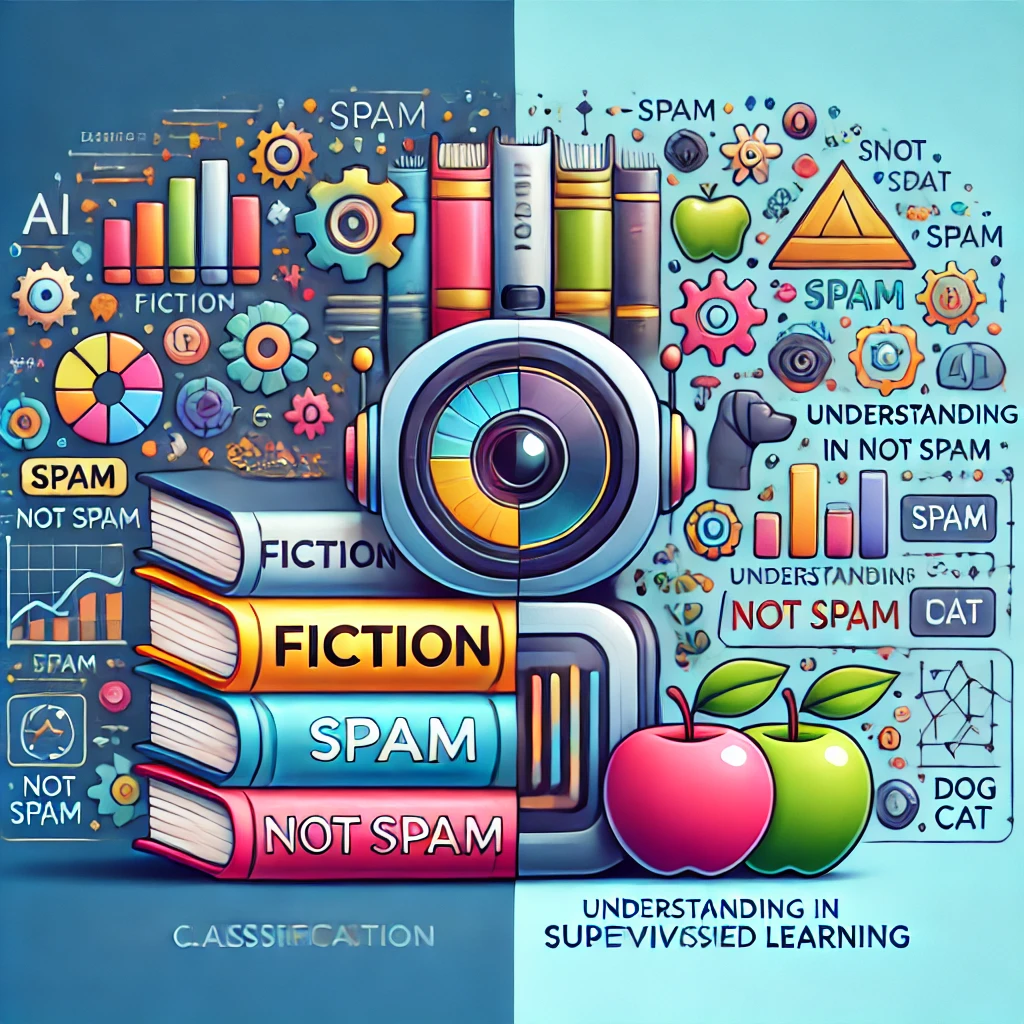Day-05 Understanding Classification in Supervised Learning
 Mohit Meshram
Mohit Meshram
Imagine you’re organizing a bunch of books into categories—fiction, non-fiction, fantasy, or mystery—based on their content. Now, imagine teaching a computer to do the same. This process of categorizing items (like books) into predefined groups is what we call classification in supervised learning.
In this blog, we’ll break down what classification is, explore its techniques, and walk through a simple example to make it crystal clear for everyone, even if you’re not a techie.
What is Classification in Supervised Learning?
Classification is a type of machine learning problem where the goal is to predict a category or label for a given input. This is done under the umbrella of supervised learning, where the model learns from labeled data—meaning the correct answers are already provided during training.
For example:
Task: Determine whether an email is spam or not spam.
Input: An email’s text.
Output: A label (spam or not spam).
Everyday Examples of Classification
Sorting Emails: Gmail sorting emails into "Primary," "Promotions," or "Spam."
Medical Diagnosis: Predicting whether a tumor is benign or malignant based on health data.
E-commerce: Categorizing products as electronics, clothing, or home appliances.
Let’s Dive Into a Simple Example
Scenario:
You want to teach a model to classify pets as either dogs or cats based on their characteristics (size and sound).
Step 1: Collect Data
Gather data like:
Pet 1: Size = Small, Sound = Meow → Label = Cat.
Pet 2: Size = Medium, Sound = Bark → Label = Dog.
Pet 3: Size = Small, Sound = Meow → Label = Cat.
Step 2: Train the Model
Feed this data into a classification algorithm, like k-Nearest Neighbors or a Decision Tree.
Step 3: Predict New Data
Given a new pet with:
- Size = Small, Sound = Meow, The model will predict the label as Cat.
Why is Classification Important
Classification helps us make sense of data in various fields, from healthcare to finance to entertainment. It saves time, improves efficiency, and even uncovers insights we might miss.
For example:
Doctors use it to diagnose diseases.
Businesses use it to segment customers and personalize offers.
Social media platforms use it to recommend content.
Wrapping Up
Classification in supervised learning might sound complex at first, but at its heart, it’s all about teaching machines to identify and categorize things—just like you would when organizing books or sorting fruits at the grocery store.
With techniques ranging from simple decision trees to advanced neural networks, classification opens up endless possibilities to make data smarter and more actionable.
So next time your email filters out spam or Netflix recommends your favorite show, you’ll know the magic behind it—classification!
In the next blog we will learn more on classification types and understand how different approaches in machine learning.
Subscribe to my newsletter
Read articles from Mohit Meshram directly inside your inbox. Subscribe to the newsletter, and don't miss out.
Written by
